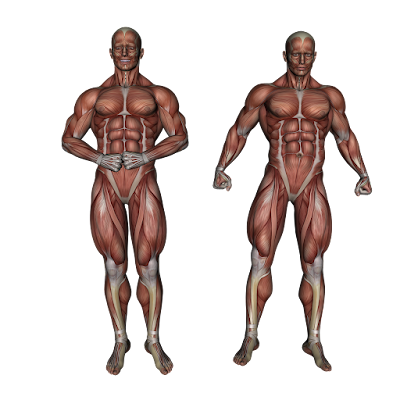An Introduction to the Muscular System: The Engine of Movement
The muscular system is the powerhouse behind every movement we make, from the delicate flick of a finger to the powerful swing of a baseball bat. This intricate network of tissues works tirelessly to maintain posture, generate force, and enable us to interact with the world around us. In this comprehensive exploration, we'll delve into the fascinating world of muscles, unveiling their structure, function, and the vital role they play in human health.
Building Blocks: Unveiling the Microscopic World of Muscle
Muscles are composed of specialized cells called muscle fibbers. These fibbers contain long, thread-like structures known as myofibrils, which are the true contractile units responsible for muscle shortening and force generation. Myofibrils are further organized into even smaller filaments – actin and myosin – that slide past each other during contraction, creating the pulling force that powers movement.
There are three main types of muscle tissue, each with distinct characteristics and functions:
Skeletal Muscle: These are the voluntary muscles that we consciously control. They are responsible for locomotion, posture, and manipulation of the environment. Skeletal muscles are striated, meaning they have a banded appearance due to the arrangement of actin and myosin filaments. Examples include the biceps brachii (upper arm muscle) and the quadriceps femoris (thigh muscle).
Smooth Muscle: Found in the walls of organs like the stomach, intestines, and blood vessels, smooth muscle is involuntary, meaning we don't have direct control over its contractions. Smooth muscle plays a crucial role in maintaining organ function, such as propelling food through the digestive system and regulating blood flow. Unlike skeletal muscle, smooth muscle lacks striations and appears more uniform under a microscope.
Cardiac Muscle: Forming the muscular walls of the heart, cardiac muscle is a unique type that is both involuntary and striated. Cardiac muscle contracts rhythmically and tirelessly throughout our lives, pumping blood throughout the body.
The Power of Contraction: How Muscles Move Us
Muscle contraction is the fundamental process by which muscles generate force and movement. When a nerve signal reaches a muscle fibber, it triggers a cascade of events that lead to the interaction of actin and myosin filaments. Calcium ions flood the muscle cell, initiating the binding of myosin heads to actin. This binding causes the myosin heads to undergo a power stroke, pulling the actin filaments closer together. As millions of myosin heads cycle through this attach-pull-release process, the entire myofibril shortens, and the muscle fibber contracts.
The coordinated contraction of numerous muscle fibbers within a muscle creates enough force to move bones at joints. Muscles typically work in pairs, with an agonist (prime mover) contracting to initiate movement and an antagonist (opposing muscle) relaxing to allow for the full range of motion. For instance, when you bend your elbow, the biceps brachii contracts (agonist), while the triceps brachii (antagonist) relaxes.
The Symphony of Movement: From Muscle Activation to Complex Actions
The nervous system plays a critical role in coordinating muscle activity. The brain sends nerve impulses to specific muscles, dictating the force, duration, and sequence of contractions needed to perform a particular movement. This intricate interplay between the nervous system and the muscular system allows us to execute complex actions with remarkable precision and control.
However, movement doesn't occur in isolation. Muscles work in concert with the skeletal system, providing the force to move bones at joints. Ligaments and tendons, composed of tough connective tissue, provide stability and connect muscles to bones, ensuring efficient transmission of force.
Sensory receptors embedded within muscles and joints continuously provide feedback to the nervous system about body position, movement speed, and force generated. This feedback loop allows for real-time adjustments and ensures smooth, coordinated movement.
Fuelling the Engine: Keeping Muscles Functioning Optimally
Muscles require a constant supply of energy to function effectively. This energy primarily comes from glucose, a simple sugar derived from carbohydrates in our diet. Oxygen is also essential, as it is used in the process of cellular respiration to convert glucose into usable energy.
Muscles store energy in the form of glycogen, a complex carbohydrate. When immediate energy is needed, glycogen is broken down into glucose to fuel muscle contractions. During periods of intense exercise, muscles may also rely on creatine phosphate, another high-energy molecule stored within muscle cells.
Proper nutrition and hydration are crucial for optimal muscle function. A balanced diet rich in carbohydrates, protein, and healthy fats provides the necessary building blocks for muscle growth and repair. Adequate hydration ensures that muscles receive the oxygen and nutrients they need to perform at their best.
Beyond Movement: The Diverse Roles of the Muscular System
While movement is the most apparent function of the muscular system, muscles play a vital role in several other bodily processes:
Maintaining Posture: Anti-gravity muscles continuously contract to maintain our upright posture against the






.jpg)

0 Comments